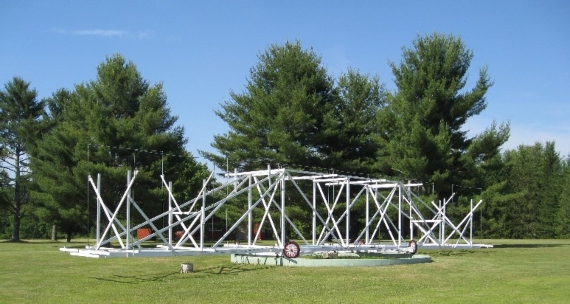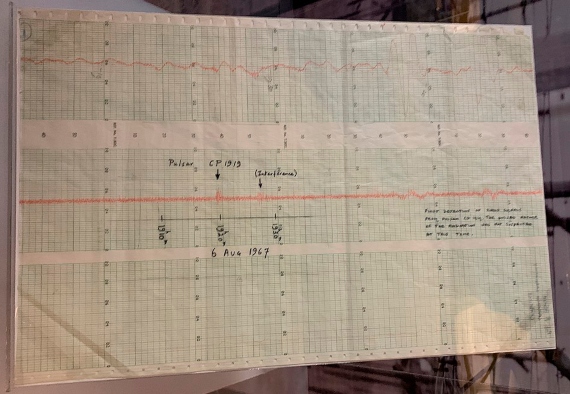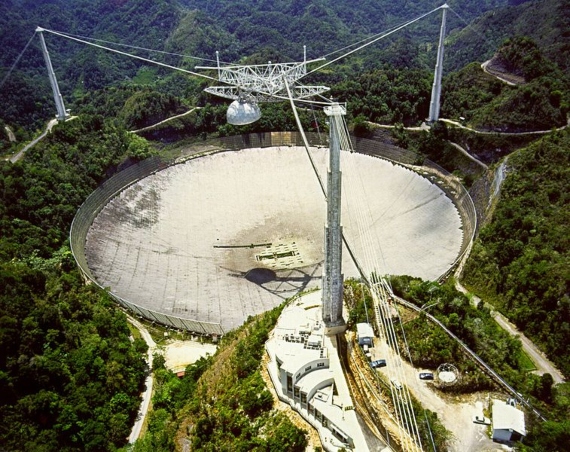In the midst of a pandemic, perhaps the news did not reach the full resonance it should have, but in 2020 we saw a mythical scientific facility collapse from old age, the huge Arecibo radio telescope in Puerto Rico. We have seen it portrayed in the cinema and in countless documentaries, and it has inspired humanity by sending a message to the stars for any being with the desire and ability to receive it. But like a great dinosaur, the immense construction succumbed to the onslaughts of the passing years and of nature. Today, science has other alternative facilities, many of them more modern, versatile and easy to maintain than the enormous Arecibo hulk, and thus radio telescopes continue to be our ears for listening to the intimate sounds of the cosmos.
In 1930, a young radio engineer named Karl Jansky was assigned by his company, Bell Telephone Laboratories, the task of studying what interference could affect transatlantic telephone communications. To do this, Jansky built a strange antenna with brass pipes, mounted on four Ford Model-T tires on a platform so that it could turn. In 1932, Jansky used his device to detect interference from storms, but he also discovered something stranger, a signal that seemed to come from the sky. Without intending to, the engineer had built the first radio telescope, with which he could listen to radio signals from the centre of the Milky Way.

At first the discovery was received as a mere curiosity, but in 1937 the electrical engineer and amateur radio operator Grote Reber, who was familiar with Jansky’s work, built the first parabolic radio telescope in his garden, with a nine-metre dish. For a decade, Reber was the only radio astronomer in the world, until after the Second World War and the development of radar when scientists began to explore this new field, identifying numerous radio sources in the sky.
The first pulsar and the search for extraterrestrial intelligence
Even in the 1960s, many researchers still had rudimentary resources; for instance, at the University of Cambridge astronomer Antony Hewish gave each new research student a toolkit, including pliers and a screwdriver, so that scientists themselves could build over two years what would become the Interplanetary Scintillation Array, a complex forest of wooden poles holding 190 kilometres of cable.
With this handcrafted instrument, Hewish, Jocelyn Bell and others discovered the first pulsar, or rotating neutron star, in 1968. But around the same time, radio astronomy began to take off in a big way, with the construction of Arecibo in 1963, whose 305-metre diameter made it the largest dish in the world. Another peculiar use of radio telescopes was also beginning at that time: the search for extraterrestrial intelligence (SETI), radio signals with a possible technological origin. In fact, Hewish and Bell initially thought that the signal they had detected was artificial; they called it LGM-1, after Little Green Men.

Since then, works of fiction such as the film and novel Contact by astronomer and science populariser Carl Sagan, have associated radio telescopes with the SETI projects in the minds of the public. This is especially true for Arecibo, from where in 1974 a message was also sent to the Hercules cluster M13, some 25,000 light years away.
However, astrophysicist Michael Garrett, director of the Jodrell Bank Centre for Astrophysics at the University of Manchester, explains to OpenMind that “radio telescopes were built to do astronomy, typically none of them will do any SETI, and if they do SETI it will represent a very small fraction of their time.” “Projects like Breakthrough Listen [a large SETI initiative founded by Russian-Israeli tycoon Yuri Milner] have bought time on two radio telescopes, the GBT [Green Bank Telescope, West Virginia, USA] and Parkes [Australia], which over the last few years have spent about one fifth of their time on SETI.”
Listening to the universe
The universe has a lot to listen to without little green men. “Radio astronomy studies the natural radio emission generated by cosmic objects such as stars and galaxies,” summarises Garrett. As Cornell University astronomer James Cordes, who has worked extensively at Arecibo, tells OpenMind, “the sky looks radically different at radio wavelengths compared to optical wavelengths, and the same statement applies to infrared wavelengths, UV, X-rays, and gamma-rays.” Therefore, “to get a complete picture of all the kinds of objects in the universe, we need to cover all wavelengths.” In particular, Garrett adds, “one major advantage of observing in the radio is that the emission can travel enormous distances without being affected by dust absorption, etc.” Unlike optical observation, radio astronomers are not affected by an overcast sky.
Radio astronomy has excelled above all in the study of certain objects and cosmic phenomena, such as Fast Radio Bursts (FRB), cosmic microwave background radiation (CMB)—a fossil trace of the Big Bang—or pulsars, a field in which Arecibo’s contribution has been crucial. “Arecibo has been a fantastic scientific instrument, responsible for at least two Nobel prizes in Physics via pulsar research,” stresses Garrett. “It is extremely sad to see its demise.”

Cordes first arrived in Arecibo in 1972 as a 22-year-old graduate student. For decades he has carried out a great deal of research there, including NANOGrav (North American Nanohertz Observatory for Gravitational Waves), a collaborative project aimed at detecting gravitational waves with wavelengths of light years—those captured by the LIGO and VIRGO collaborations measure kilometres—by observing pulsars. As Cordes explains, until now NANOGrav obtained 50% of its data from Arecibo, and the rest mainly from the GBT. The scientists working on the project are currently looking for a replacement for the defunct facility.
The world’s largest dish
One option is the Chinese radio telescope called FAST (Five-hundred-metre Aperture Spherical Telescope), which in 2016 snatched the title of the world’s largest dish from Arecibo with its 500-metre diameter. Until now, it has only been available to Chinese researchers, but recently its managers announced that from 2021 they will accept applications from foreign scientists. However, FAST cannot completely replace Arecibo, and Cordes fears there will be jostling among researchers to use it: “Given that FAST is very powerful, there are many demands on the telescope time, so it isn’t likely that we can replace the entirety of our observing program at Arecibo with FAST observations.” Garrett is of the same opinion: “FAST is a very nice alternative, though it remains to be seen how easy it will be for astronomers around the world to get access to it—especially over the next few years as it becomes fully operational.”
But ultimately, and despite FAST, these colossal facilities may end up being relegated to the past. Garrett questions whether it would be worthwhile to rebuild another Arecibo, an idea that has many supporters; “a design incorporating a large number of densely packed smaller dishes might make more sense.” In fact, these groups of smaller antennas are the preferred option today, and even different radio telescopes can be combined to turn the whole Earth into one big ear, as has been done to obtain the first image of a black hole. “Science and technology has moved on a lot since Arecibo was first built 60 years ago,” Garrett concludes.
Comments on this publication